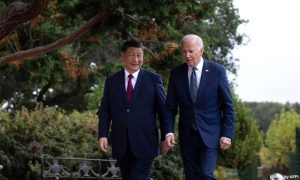NEW DEHLI: In a quiet tin shed-turned-waiting area at a Silchar-based cancer hospital in north-eastern India, numerous patients quietly await their turn, representing a surge in visitors from neighboring towns and villages to the Cachar Cancer Centre in Assam.
This influx stems from an impactful change: a quiet revolution in making cancer medications more accessible. This hospital, affiliated with the National Cancer Grid, collaborates with various treatment centers to collectively purchase drugs, reducing expenses by over 85%. Though it’s a modest beginning, it’s a life-changing opportunity for some of India’s most economically disadvantaged individuals. The financial burden of extensive and costly treatments often overwhelms families or renders them unattainable.
For instance, treatments for breast cancer, spanning more than 10 cycles, can surpass $6,000 (£4,719) – an insurmountable figure considering the country’s average monthly income is less than $700. Baby Nandi, 58, recalls her arduous journey for breast cancer treatment, requiring travel of 2,000km (1,242 miles) and costing $650 per treatment cycle, totaling six cycles. Coupled with travel and accommodation expenses, her family faced severe financial strain.
However, thanks to the recent initiative, these crucial drugs are now accessible in her hometown of Silchar, priced at a mere third of the previous cost.
Baby’s husband Narayan Nandi said: “We don’t have so much money at a go. I had to sell land and borrow from my relatives to take her to Chennai. At least now we can afford her full treatment and be home.”
India reports nearly two million cancer cases annually, though consultancy firm EY suggests the actual count could reach up to three times that figure. With the majority of citizens responsible for their healthcare expenses, even those with insurance or under government schemes often face insufficient coverage, as seen in Amal Chandra’s case. When his wife’s government health card, covering $1,800 in health expenses, expired mid-treatment for breast cancer, he had to borrow $250 for her remaining chemotherapy.
Their struggle reflects a broader issue: most of India’s cancer patients reside in towns and rural areas, yet the primary healthcare resources are concentrated in larger cities. This geographical disparity forces patients like Mrs. Nandi to endure long journeys for treatment. Healthcare professionals highlight the difficulty in distributing cancer drugs across the country, a significant challenge for the healthcare system.
Cachar Cancer Hospital, the lone facility in India’s North-eastern hills, serves 5,000 new patients yearly and provides ongoing treatment to 25,000 individuals, predominantly low-wage earners who can’t afford treatment or travel expenses. However, the hospital grapples with financial strain, facing a monthly deficit exceeding $20,000 due to the overwhelming demand.
Dr. Ravi Kannan, the hospital’s leading oncologist, credits reduced drug prices for enabling the purchase of quality medicines and expanding free treatment. Moreover, the initiative has prevented drug shortages in smaller towns, previously plagued by irregular supplies due to low patient numbers and limited funding.
“Now smaller hospitals don’t have to get into the negotiation table at all. The price is already decided and comes with a commitment to supply to all hospitals at par,” Dr Kannan said.
Tata Memorial Hospital (TMH) in Mumbai spearheads the effort to purchase medications in bulk, starting with 40 widely-used off-patent generic drugs, which account for 80% of their pharmacy expenses, resulting in savings of $170 million. This achievement has garnered attention from hospitals and state governments nationwide. The upcoming phase aims to encompass over 100 drugs, with contemplation on extending purchases to broader aspects of cancer care such as supplies, diagnostics, and equipment, yet excluding pricier patented treatments from the current agenda.
“I think what pharmaceutical companies need to understand is in a market like India, unless you bring costs down, you’re not going to get the volumes and it’s a chicken and the egg phenomenon,” according to Dr C S Pramesh, Director of TMH and the Convenor of National Cancer Grid.
Dr. Pramesh emphasizes that initiatives akin to India’s National Cancer Grid could play a pivotal role in supporting patients worldwide, especially in lower and middle-income countries, where approximately 70% of global cancer-related deaths are expected to occur.























